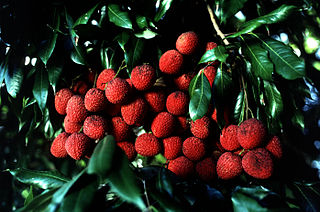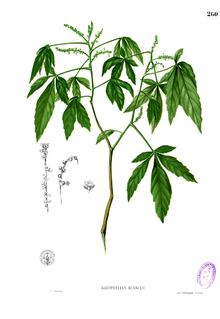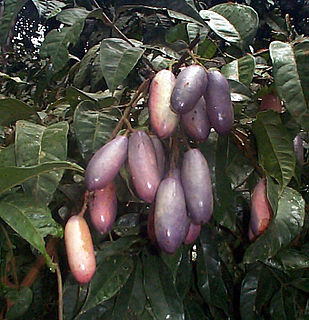| Placodiscus | |
|---|---|
| Scientific classification | |
| Kingdom: | Plantae |
| Clade: | Angiosperms |
| Clade: | Eudicots |
| Clade: | Rosids |
| Order: | Sapindales |
| Family: | Sapindaceae |
| Subfamily: | Sapindoideae |
| Genus: | Placodiscus Radlk. |
Placodiscus is a genus of plant in family Sapindaceae. The following species are accepted by Plants of the World Online : [1]

Plants are mainly multicellular, predominantly photosynthetic eukaryotes of the kingdom Plantae. Historically, plants were treated as one of two kingdoms including all living things that were not animals, and all algae and fungi were treated as plants. However, all current definitions of Plantae exclude the fungi and some algae, as well as the prokaryotes. By one definition, plants form the clade Viridiplantae, a group that includes the flowering plants, conifers and other gymnosperms, ferns and their allies, hornworts, liverworts, mosses and the green algae, but excludes the red and brown algae.

The Sapindaceae is a family of flowering plants in the order Sapindales known as the soapberry family. It contains 138 genera and 1858 accepted species, including maple, ackee, horse chestnut and lychee.
Plants of the World Online is an online database published by the Royal Botanic Gardens, Kew. It was launched in March 2017 with the ultimate aim being "to enable users to access information on all the world's known seed-bearing plants by 2020". The initial focus was on tropical African Floras, particularly Flora Zambesiaca, Flora of West Tropical Africa and Flora of Tropical East Africa.
- Placodiscus amaniensis Radlk.
- Placodiscus angustifolius Radlk. ex Engl.
- Placodiscus attenuatus J. B. Hall
- Placodiscus bancoensis Aubrév. & Pellegr.
- Placodiscus boya Aubrév. & Pellegr.
- Placodiscus caudatus Pierre ex Pellegr.
- Placodiscus gimbiensis Hauman
- Placodiscus glandulosus Radlk.
- Placodiscus leptostachys Radlk.
- Placodiscus oblongifolius J.B.Hall
- Placodiscus opacus Radlk.
- Placodiscus paniculatus Hauman
- Placodiscus pedicellatus F. G. Davies
- Placodiscus pseudostipularis Radlk.
- Placodiscus pynaertii De Wild.
- Placodiscus resendeanus Exell & Mendonça
- Placodiscus riparius Keay
- Placodiscus splendidus Keay
- Placodiscus turbinatus Radlk.
Placodiscus attenuatus is a species of plant in the family Sapindaceae. It is found in Ivory Coast and Ghana. It is threatened by habitat loss.
Placodiscus bancoensis is a species of plant in the family Sapindaceae. It is found in Ivory Coast and Ghana. It is threatened by habitat loss.
Placodiscus boya is a species of plant in the family Sapindaceae. It is found in Côte d'Ivoire and Ghana. It is threatened by habitat loss.








